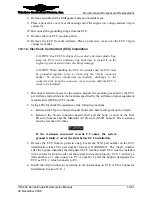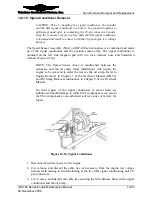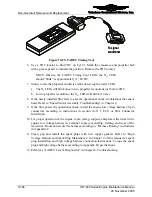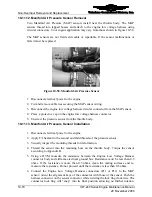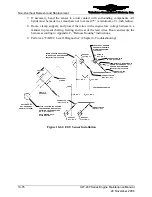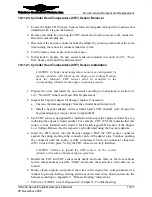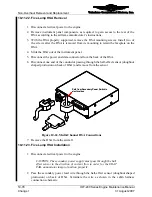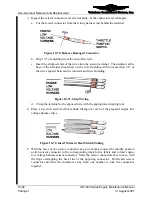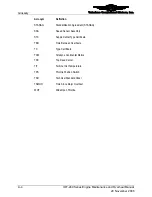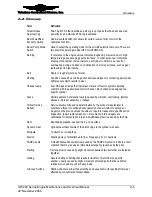
Teledyne Continental Motors, Inc.
TM
Non-Overhaul Removal and Replacement
IOF-240 Series Engine Maintenance Manual
10-75
29 November 2006
10-11.19. Exhaust Gas Temperature Sensor Installation
Exhaust gas temperature (EGT) sensors are identified by a label on the Engine Low
Voltage Harness for specific cylinders; the sensors are “hardwired” to the Engine Low
Voltage Harness. Each sensor is fitted with an adjustable, worm style band clamp for
easy installation. The band clamps are not replaceable. If the band clamp is damaged,
replace the EGT sensor assembly.
CAUTION: Route engine wiring to avoid contact with sharp edges
or extreme heat. Chafing or burned wires will result in faulty
indications and possible engine failure.
CAUTION: Each EGT sensor is identified and designated for a
specific cylinder. Install the EGT sensor only in the exhaust pipe of
the designated cylinder. Failure to install the EGT sensors on the
correct cylinder will result in abnormal engine operation.
Procedure
1.
Verify the Engine Low Voltage Harness EGT sensor wiring segment is properly
labeled. If the label is missing or illegible, replace the label with a new one, indicating
the proper cylinder.
2.
Place the new EGT sensor in the location to be installed. Route the wiring harness
along the path of final installation to determine the length of the installed harness.
Trim the new sensor leads and existing harness leads to closely approximate the
length of the original wire.
3.
Connect the new sensor to the engine low voltage harness using the instructions in
section 10-10.2, “EGT Sensor and Lead Wire Replacement.”
4.
Route the Engine Low Voltage Harness wiring EGT sensors for cylinders 1-3 from
the rear of the engine to the lower right-hand quadrant of the engine and onto each
sensor’s respective cylinder. Engine Low Voltage Harness wiring EGT sensors for
cylinders 2-4 from the rear of the engine to the lower left-hand quadrant of the engine
and onto each sensor’s respective cylinder.
5.
Place the sensor into the exhaust tube. Locate the EGT sensor probe in the exhaust
pipe within the diameter specified in Figure 10-62. Wrap each clamp around the
exhaust pipe; tighten the clamp until the sensor is secure but the crimps in the band
are not flattened against the outside surface of the exhaust pipe. The crimps
accommodate thermal expansion of the exhaust during engine operation.
CAUTION: If the excess portion of the band comes in contact with
the sensor body, permanent damage could result.
6.
Ensure each EGT sensor is securely retained by the clamp provided. Trim excess
clamp length (extending beyond the clamping nut) to within ¼-inch of the worm
screw body or fold the excess away from the EGT sensor body, ensuring the excess
does not contact surrounding components allowances.
CAUTION: EGT sensor bend angles greater than 75
°
will
permanently damage the EGT sensor.

